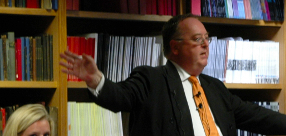
Auction: 23127 - Spink Numismatic e-Circular 32: Indian and Islamic Coins Featuring the Klaus Bronny Collection of Bhutanese and Nepalese Coins - e-Auction
Lot: 9616
(x) South India or Sri Lanka (Ceylon), Dutch East India Company (VOC) (1760-1794), gold 'Porto Novo' Pagoda, 3.42g, new Negapatnam type, struck at Tuticorin and Colombo, Vishnu standing facing, rev. convex granular surface (Scholten 1259), natural edge cracks between 2 and 4 o'clock, otherwise a pleasing strike, about extremely fine
A Gentleman's Collection of Sri Lankan Coins - Part III
Metallurgical analysis reveals a reading of:
Au 86.07%
Cu 4.47%
Ag 8.93%
Fe 0.27%
Scholten writes, 'From a letter of June 10th 1759 from the Governor-General and the Council of Batavia to the Governor and Council at Colombo it appears that the coinage took place by order of Colombo. As they were struck with the 'Negapatnum new die' it is impossible to distinguish them. According to the Minting Report they were still being struck in 1764.
After 1767 the fineness of the Pagoda was lowered here too. In 1781, in view of the war in England, the Mint for gold and silver was transferred to Colombo for the time being. From a list of specimens present in the treasury of Ceylon…it appears that Pagodas struck here must have been distinguishable among each other. From 1784 to 1785 Pagodas of 18 carat or 0.769 were struck at Colombo. From 1787, when the Mint was moved back, to 1794, this was continued at Tuticorin.
For the payment of a debt to France arising out of the war with England, in 1783 a parcel of gold coins formerly current on the Coast of Malabar, together with "Persian and Hindustan gold Mohrs", were re-minted into more than 34,900 Porto Novo Pagodas of 17 carats, or 0.708.
As already pointed out, in august 1786 the Mint was back at Tuticorin and in 1788 over 7,100 of these Pagodas were struck of a fineness of only 15 carats, or 0.625.'
Subject to 5% tax on Hammer Price in addition to 20% VAT on Buyer’s Premium.
Sold for
£200
Starting price
£180




